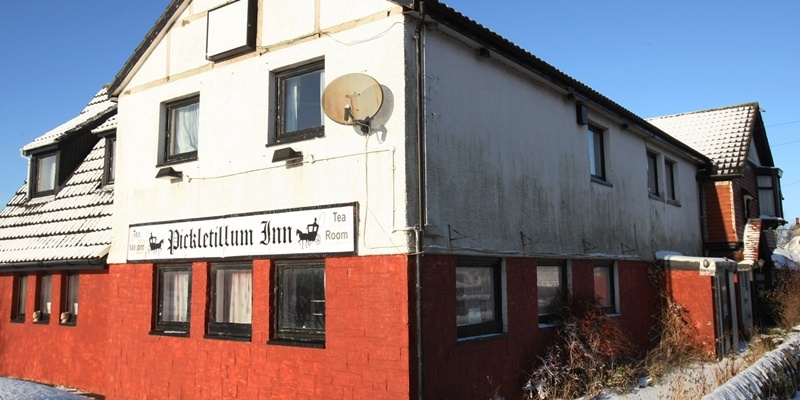A historic drovers’ inn in north-east Fife is once more under threat of demolition after a developer’s planning appeal was upheld by the Scottish Government.
Councillors had previously turned down plans to raze the Pickletillum Inn to the ground last year, despite owner Raj Kumar’s suggestions the building is no longer fit for purpose and unsuitable for conversion.
Dr Kumar had wanted to build five houses on the site near Drumoig but saw his proposal thrown out by Fife’s north east area committee last year.
Despite that, The Courier has learned the 18th century inn could yet disappear from the landscape following news that Scottish Government reporter Richard Hickman has overturned the committee’s decision and granted permission in principle for the development to go ahead.
When the matter was first considered, 17 letters of objection against the plans were received and the council opted to reject the proposals as they failed to comply with policy on housing in the countryside.
Nevertheless, Mr Hickman’s findings appear to back Dr Kumar’s suggestion that redevelopment of the existing buildings is not viable and that demolition and improvements to vehicular access are needed.
”Objectors would like to see the inn restored and retained, as part of the history of the area and to provide a useful tourist asset,” Mr Hickman said. ”I have sympathy with these views, as the routeways of the drovers are part of Scotland’s heritage.
”However, the inn building is of negligible architectural interest, comprising a mish-mash of extensions and alterations, and having a generally 1960s external appearance.”
The main matters of concern to those objecting to the proposals first time around, in addition to housing policy, related to the loss of the inn itself, as it is said to be one of the oldest in the country.
Opponents also felt access and road safety issues would be a problem with housing on that site.
